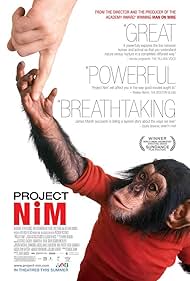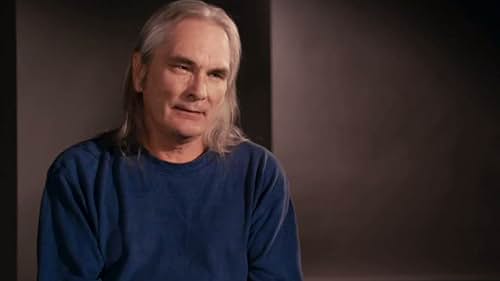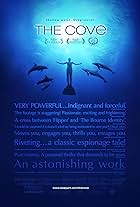IMDb RATING
7.4/10
8.6K
YOUR RATING
Tells the story of a chimpanzee taken from its mother at birth and raised like a human child by a family in a brownstone on the upper West Side in the 1970s.Tells the story of a chimpanzee taken from its mother at birth and raised like a human child by a family in a brownstone on the upper West Side in the 1970s.Tells the story of a chimpanzee taken from its mother at birth and raised like a human child by a family in a brownstone on the upper West Side in the 1970s.
- Nominated for 1 BAFTA Award
- 16 wins & 30 nominations total
Nim Chimpsky
- Self
- (archive footage)
Wer LaFarge
- Self
- (archive footage)
James Mahoney
- Self
- (as Dr. James Mahoney)
Cleveland Amory
- Self
- (archive footage)
- Director
- Writer
- All cast & crew
- Production, box office & more at IMDbPro
Storyline
Did you know
- TriviaVeteran primate choreographer and actor Peter Elliott actually met and worked with Nim Chimpsky when he was researching chimpanzees for Greystoke: The Legend of Tarzan, Lord of the Apes (1984). He also met and worked with another famous signing chimp by the name of Washoe.
- ConnectionsFeatured in Maltin on Movies: Harry Potter and the Deathly Hallows: Part 2 (2011)
Featured review
This is a very good and engaging film. I will not reiterate plot as this is available in the other fine reviews, but I have to say I found the documentary both heartening and deeply sad in equal measures.
Firstly, I do agree with the other reviewers comments on futility, I do not, however, agree entirely with Professor Terrace's view that the project was a failure, though conversely I do think the project failed Nim. To expand on this I would say that the conclusion of Terrace's failure seemed to fit a classic narrow set of parameters by which you compare and judge the outcome solely on an initial and highly specific expectation of what you will achieve. To this end perhaps it failed Professor Terrace's criteria.
I think however opportunities were certainly lost. Nim seemed to interact in so many subtle and fascinating ways during the process of his teaching, and he seemed to teach a great deal to all of the assistants who gave him their care. There seemed to be so little structure from the start with regards to what was to be taught and observed and in which direction the project should be going.
The only constant seemed to be the teaching of signing, at which Nim excelled! From what I could see, regardless of whether he learnt the actions to manipulate his handlers or not, he still learnt the signs. Since it was known that the chimp could not form human speech, how was it to communicate what it had learnt and why it was using the language in this way? I found this point frustrating and dubious and an example of one person with their eye so "firmly on the prize", that they miss the importance of the process.
Importantly, everybody who was involved across the duration of the project was given a chance to clearly state the turn of events. Perspectives on this varied widely, as you would expect, as everybody brought a different set of expectations and sensibilities, but it was a mature approach which I think led to the films balanced handling of Nim's story.
All in all I found it a fascinating cautionary tale. Luckily the balance of academic ego versus humanity that twists through this story left me with hope that indeed something had been learnt from the unique life of this Chimpanzee.
Firstly, I do agree with the other reviewers comments on futility, I do not, however, agree entirely with Professor Terrace's view that the project was a failure, though conversely I do think the project failed Nim. To expand on this I would say that the conclusion of Terrace's failure seemed to fit a classic narrow set of parameters by which you compare and judge the outcome solely on an initial and highly specific expectation of what you will achieve. To this end perhaps it failed Professor Terrace's criteria.
I think however opportunities were certainly lost. Nim seemed to interact in so many subtle and fascinating ways during the process of his teaching, and he seemed to teach a great deal to all of the assistants who gave him their care. There seemed to be so little structure from the start with regards to what was to be taught and observed and in which direction the project should be going.
The only constant seemed to be the teaching of signing, at which Nim excelled! From what I could see, regardless of whether he learnt the actions to manipulate his handlers or not, he still learnt the signs. Since it was known that the chimp could not form human speech, how was it to communicate what it had learnt and why it was using the language in this way? I found this point frustrating and dubious and an example of one person with their eye so "firmly on the prize", that they miss the importance of the process.
Importantly, everybody who was involved across the duration of the project was given a chance to clearly state the turn of events. Perspectives on this varied widely, as you would expect, as everybody brought a different set of expectations and sensibilities, but it was a mature approach which I think led to the films balanced handling of Nim's story.
All in all I found it a fascinating cautionary tale. Luckily the balance of academic ego versus humanity that twists through this story left me with hope that indeed something had been learnt from the unique life of this Chimpanzee.
- robertsmith-132-302257
- Aug 12, 2011
- Permalink
- How long is Project Nim?Powered by Alexa
Details
Box office
- Gross US & Canada
- $411,184
- Opening weekend US & Canada
- $25,820
- Jul 10, 2011
- Gross worldwide
- $612,839
- Runtime1 hour 33 minutes
- Color
- Sound mix
Contribute to this page
Suggest an edit or add missing content




























